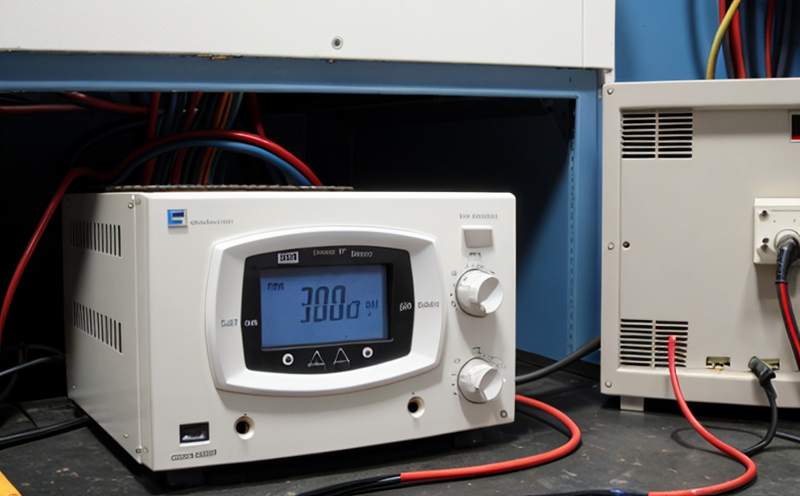IEC 61000 4 3 Radiated RF Electromagnetic Field Immunity Testing of Luminaires
The International Standard IEC 61000-4-3 defines the procedures for testing the immunity of electrical and electronic devices to radiated electromagnetic fields. This standard is particularly important in ensuring that luminaires, which are susceptible to electromagnetic interference (EMI), can function correctly under real-world conditions.
Electrical devices like luminaires are often exposed to a range of electromagnetic disturbances from various sources such as communication equipment, industrial processes, and natural phenomena. Ensuring these devices meet the immunity requirements specified by IEC 61000-4-3 is crucial for their reliable performance in diverse environments.
The testing process involves exposing luminaires to controlled levels of radiated electromagnetic fields across a broad frequency spectrum. The purpose is to assess how well the luminaire can withstand these disturbances without degradation in its functionality. This testing ensures compliance with international standards and enhances product reliability, which is essential for maintaining consumer trust.
The standard specifies test setups, measurement procedures, and acceptance criteria that must be followed during the testing process. Compliance with IEC 61000-4-3 is mandatory for luminaires intended for sale in many countries around the world to ensure they meet safety and performance requirements as per local regulations.
During the test, a controlled electromagnetic field is generated using specialized equipment designed to simulate real-world conditions. The luminaire under test is placed within this field at specific distances and orientations defined by the standard. The field strength and frequency range are carefully chosen based on the expected exposure conditions in the intended application.
The testing process evaluates several key parameters that include, but are not limited to, voltage stability, power consumption, light output consistency, and overall performance of the luminaire. Any significant deviation from these benchmarks during the test indicates a failure, which could suggest potential issues with the luminaire’s design or manufacturing.
Understanding the significance of IEC 61000-4-3 testing is crucial for quality managers, compliance officers, R&D engineers, and procurement teams involved in the design and supply chain processes. By ensuring that luminaires meet these rigorous standards, manufacturers can provide products that are robust against electromagnetic interference, thereby enhancing their market competitiveness.
The standard's requirements not only enhance product reliability but also contribute to broader environmental sustainability goals by promoting the use of durable, efficient, and interference-resistant lighting solutions. This aligns with global efforts to reduce energy consumption and minimize electronic waste.
Benefits
The benefits of adhering to IEC 61000-4-3 testing are multifaceted, encompassing both technical and commercial advantages. One significant advantage is enhanced product reliability, ensuring that luminaires perform consistently across various environments without being adversely affected by electromagnetic interference.
Another benefit is improved consumer satisfaction, as customers can expect consistent performance from their lighting solutions. This leads to increased customer loyalty and positive brand perception. Additionally, compliance with international standards such as IEC 61000-4-3 helps manufacturers avoid costly recalls and product failures, streamlining the supply chain process.
From a regulatory perspective, meeting these testing requirements ensures that products meet safety and performance criteria mandated by local authorities and global markets. This can open up new market opportunities for compliant luminaires across different regions.
The standard also facilitates easier integration into existing infrastructure without causing interference issues. This is particularly important in urban environments where lighting systems are part of a larger network of electronic devices.
Customer Impact and Satisfaction
Clients who invest in IEC 61000-4-3 testing gain significant advantages that directly impact their business operations and customer satisfaction. By ensuring product compliance with international standards, customers can expect higher quality products that are reliable and perform consistently under various conditions.
Compliance also enhances brand reputation, fostering trust among consumers who value the reliability of lighting solutions they purchase. This trust translates into increased customer loyalty and repeat business opportunities for manufacturers adhering to these rigorous testing protocols.
The testing process helps identify potential issues early in the development cycle, allowing manufacturers to address them before product release. This proactive approach not only saves costs associated with post-market recalls but also ensures that products meet all necessary regulatory requirements, thereby reducing legal risks.
Environmental and Sustainability Contributions
- Minimizing the risk of electromagnetic interference (EMI) ensures longer product life cycles. Reduced EMI helps prevent premature failures, which in turn reduces electronic waste.
- Enhanced reliability leads to more efficient lighting systems that consume less energy, contributing positively to global sustainability efforts.
- Compliance with international standards promotes the use of durable and interference-resistant materials in luminaire design. This results in products that are not only robust but also contribute to a circular economy by being easier to recycle.





